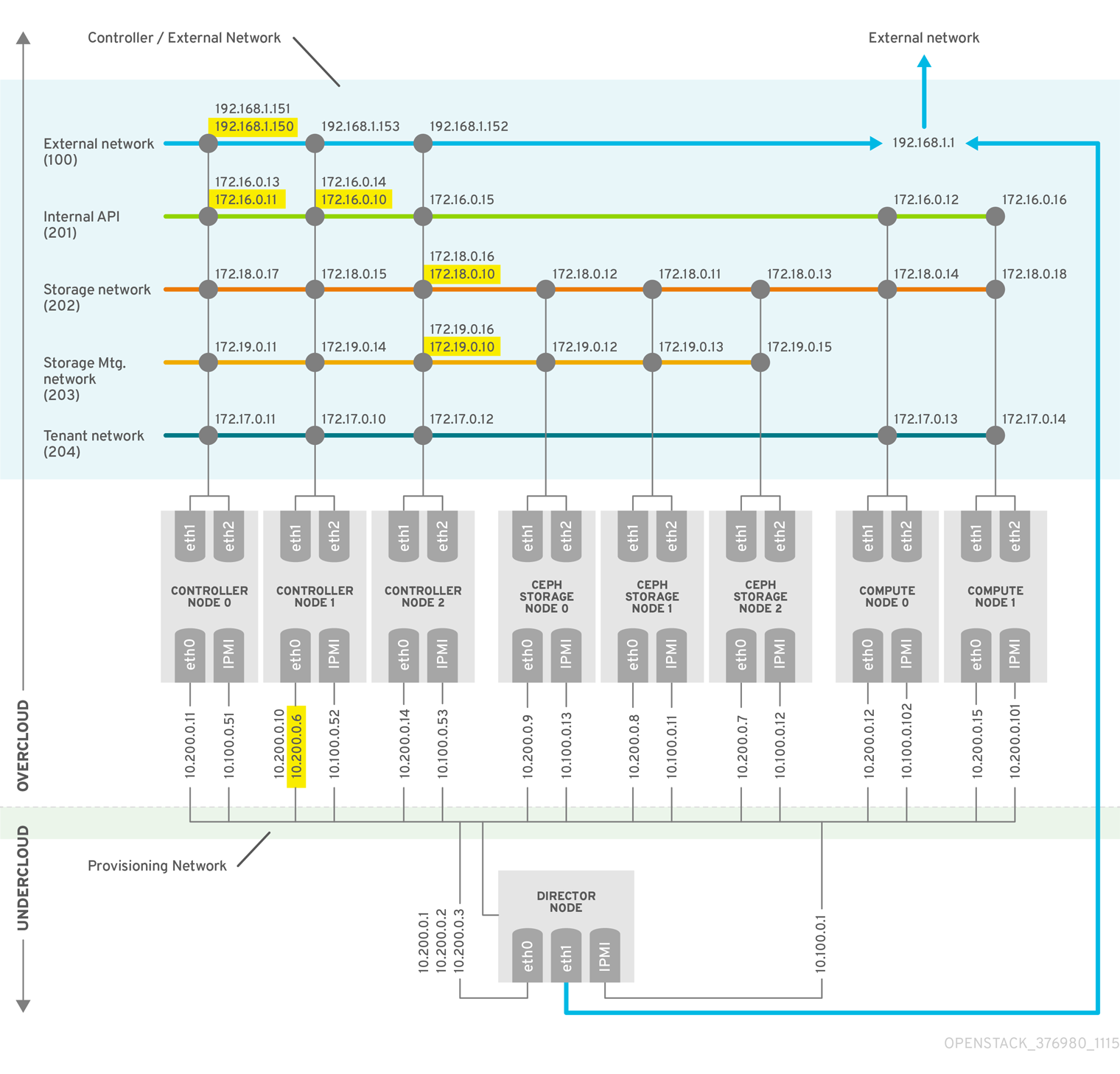第2章 Example deployment: High availability cluster with Compute and Ceph
The following example scenario shows the architecture, hardware and network specifications, as well as the undercloud and overcloud configuration files for a high availability deployment with the OpenStack Compute service and Red Hat Ceph Storage.
This deployment is intended to use as a reference for test environments and is not supported for production environments.
図2.1 Example high availability deployment architecture

For more information about deploying a Red Hat Ceph Storage cluster, see Deploying an Overcloud with Containerized Red Hat Ceph.
For more information about deploying Red Hat OpenStack Platform with director, see Director Installation and Usage.
2.1. Hardware specifications
The following table shows the hardware used in the example deployment. You can adjust the CPU, memory, storage, or NICs as needed in your own test deployment.
| Number of Computers | Purpose | CPUs | Memory | Disk Space | Power Management | NICs |
|---|---|---|---|---|---|---|
| 1 | undercloud node | 4 | 6144 MB | 40 GB | IPMI | 2 (1 external; 1 on provisioning) + 1 IPMI |
| 3 | Controller nodes | 4 | 6144 MB | 40 GB | IPMI | 3 (2 bonded on overcloud; 1 on provisioning) + 1 IPMI |
| 3 | Ceph Storage nodes | 4 | 6144 MB | 40 GB | IPMI | 3 (2 bonded on overcloud; 1 on provisioning) + 1 IPMI |
| 2 | Compute nodes (add more as needed) | 4 | 6144 MB | 40 GB | IPMI | 3 (2 bonded on overcloud; 1 on provisioning) + 1 IPMI |
Review the following guidelines when you plan hardware assignments:
- Controller nodes
- Most non-storage services run on Controller nodes. All services are replicated across the three nodes, and are configured as active-active or active-passive services. An HA environment requires a minimum of three nodes.
- Red Hat Ceph Storage nodes
- Storage services run on these nodes and provide pools of Red Hat Ceph Storage areas to the Compute nodes. A minimum of three nodes are required.
- Compute nodes
- Virtual machine (VM) instances run on Compute nodes. You can deploy as many Compute nodes as you need to meet your capacity requirements, as well as migration and reboot operations. You must connect Compute nodes to the storage network and to the tenant network, to ensure that VMs can access the storage nodes, the VMs on other Compute nodes, and the public networks.
- STONITH
- You must configure a STONITH device for each node that is a part of the Pacemaker cluster in a highly available overcloud. Deploying a highly available overcloud without STONITH is not supported. For more information on STONITH and Pacemaker, see Fencing in a Red Hat High Availability Cluster and Support Policies for RHEL High Availability Clusters.